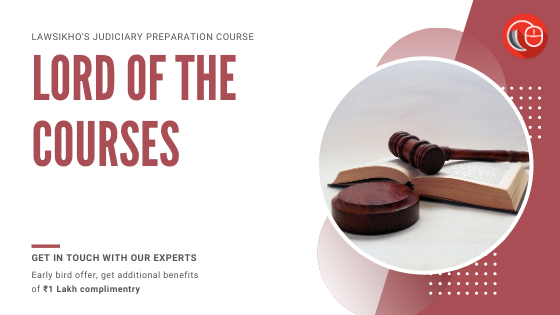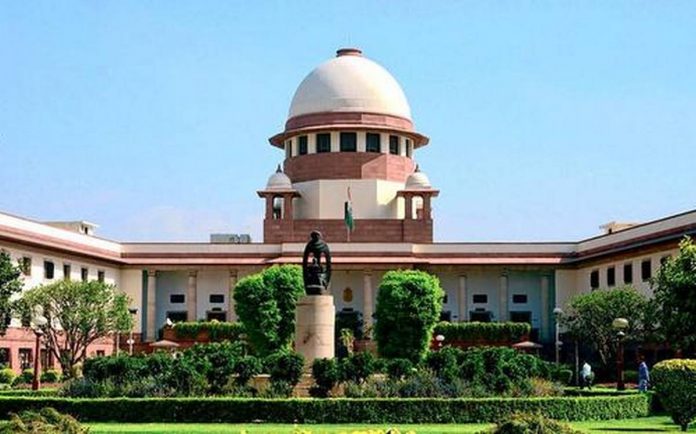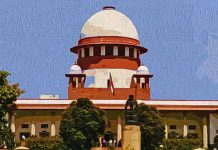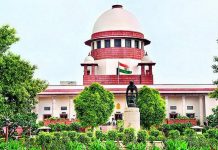This article is written by Gitika Wadhwani, from Jagran Lakecity University, Bhopal. It is an exhaustive article on the Indian judiciary, the present composition of the Supreme Court and improper representation of states in the Supreme Court, and the need for proper representation of states.
Table of Contents
Indian judicial system
India has the oldest judiciary in the world. In ancient India there were administrative units at different distances in villages, there were courts that consisted of three judges who were called Dharmashastra and three ministers called amatya. There was a hierarchy of courts beginning from the family court headed by a family arbitrator, the higher court of the judge, the next was chief justice and the highest was the king’s court. Indian judiciary follows a common law system inherited from the British era where all the laws are codified. The judiciary functions independently from the legislature and executive and the rule of law and principles of natural justice are applied by the judiciary in the administration of justice.
Supreme Court
The Supreme Court came into power on 28th January 1950. It is the Apex body and highest court of appeal in India. It is the protector of the Constitution of India. It consists of a Chief Justice of India and thirty-three other judges.
Appointment of judges
The Supreme Court judges are appointed by the President and hold office till the age of sixty-five years. A person can be appointed as a supreme judge only if he is a citizen of India and:
- Has been a judge of the high court for at least five years; or
- Has been an advocate of the high court for at least ten years;
- Is a distinguished jurist in the opinion of the President.
Resignation and removal of judges
- A judge may resign his office by writing to the President.
- A judge can be removed by the President on the ground of proven misbehaviour or incapacity.
Jurisdiction of the Supreme Court
The Supreme Court mainly has three types of jurisdiction: original jurisdiction, appellate jurisdiction, and advisory jurisdiction.
Original Jurisdiction
Under original jurisdiction, the Supreme Court can exercise its power in disputes between centre and state or states, centre and state on one side and one or more states on the other side, between two or more states.
Appellate Jurisdiction
The Supreme Court can exercise its appellate jurisdiction in both civil and criminal cases on the decree or order passed by the high court. It also has discretionary powers to grant special leave to appeal from order or decree of any court to tribunal in India.
Advisory Jurisdiction
If the President finds that any question of fact or law has arisen which is of public importance it can obtain the opinion of the Supreme Court.
High courts
High courts are the apex courts in the hierarchy of state judiciary. High courts have jurisdiction over a state, a union territory or two or more states, or union territories. Currently, there are 25 high courts in India. High courts are constitutional bodies established under Article 214 of the constitution. High courts consist of a chief justice and such a number of judges as President may deem necessary to appoint.
Appointment of judges
High court judges are appointed by the President and hold office till the age of sixty-two years. A person can be eligible for being the high court judge only if he is a citizen of India and:
- Has held a judicial office for at least ten years in the territory of India, or
- Has been an advocate of the high court for at least ten years.
Resignation and removal of judges
- A judge may resign his office by writing to the President.
- A judge can be removed by the President on the ground of proven misbehaviour or incapacity.
- The office of a judge shall be vacated if he is appointed as a judge of the Supreme Court or is transferred to any other high court in the territory of India by the President.
Jurisdiction of High Courts
The high court has the power to issue certain writs to authorities or persons under its jurisdiction. It may issue any of the following writs:
Habeas corpus
It is a Latin word that means “you have the body”. This writ can be issued against unlawful detention of the prisoner by the state authorities.
Mandamus
It is a Latin word that means “we command ”, this writ can be issued by a superior court to any subordinate court or public authority to do or abstain from doing an act which they are obliged to do or not to do under the law.
Quo warranto
Quo warranto is a writ to determine the legal right of a person to hold an office. If an authority exercises its powers beyond its jurisdiction it can be questioned through the writ of Quo warranto.
Certiorari
It is issued by a superior court to a subordinate court challenging the decision of the subordinate court on grounds of error, excess of jurisdiction, or violation of principles of natural justice.
Prohibition
This writ is issued by the superior court to subordinate courts restraining them to decide the case which is not in their jurisdiction.
Lower Courts
Below high courts, there are subordinate courts, at the district level for civil cases, criminal cases, and family cases. They are mainly classified into two types: civil courts and criminal courts.
District court or sessions court
It is the principal court of original jurisdiction. It is headed by a district or sessions judge. From here the appeal can lie to high courts and the Supreme Court.
Appointment of judges
- The district judges are appointed by the Governor of the state in consultation with the chief justice of the high court of the respective state.
- For direct appointment to the district court without serving union or state, a minimum of seven years of practice as an advocate or as a pleader is required.
Removal of judges
A district judge can be removed from his office by the governor after confirming with the high court collegium.
Jurisdiction of court
The district court or sessions court has both original and appellate jurisdiction in civil and criminal cases arising in the district.

How are Supreme Court judges appointed
The Supreme Court judges are appointed by the President under Article 124 of the Constitution.
Initially, the Supreme Court judges were appointed by the President after consultation with such judges of the Supreme Court or of high courts of states as the President may deem necessary.
Until 1993 the President only required consultation of judges including CJI but was not bound to follow their decision, which means the President had the final say in the appointment.
In the second judges’ case, this was changed and it was stated that consultation should be read as concurrence. The CJI should have primacy when it comes to judicial appointments. The appointments were made after consulting the CJI and the next two senior-most judges of the Supreme Court.
Role of the union government
The union government plays an important role during the procedure followed in the appointment of judges of the Supreme Court.
- Whenever any vacancy arises or is likely to arise in the office of a judge of the Supreme Court, the CJI initiates the proposal and forwards his recommendation to the Union Minister of Law, Justice, and company affairs to fill the vacancy.
- The CJI should form his opinion for the appointment of a judge of the Supreme Court in consultation with a collegium that comprises four senior-most judges of the Supreme Court.
- The CJI would ascertain the views of the senior-most judge who hails from the same high court from where the person recommended belongs. If he does not know his merits then the next senior-most judge who hails from a similar high court is consulted.
- The judges who have on transfer have occupied the office of judge of that high court can also be consulted.
- The opinion of collegium and opinion of the senior-most judge in Supreme Court from the high court from where the prospective candidates comes would be made in writing and the CJI must transmit his and the opinion of all to the government of India as a part of the record.
- After receiving the final recommendations of CJI, the recommendations are put before the prime minister by the Union minister of law, justice, and company affairs. The Prime Minister advises the President on matters of appointment.
- As soon as the appointment is approved, the secretary of the government of India informs CJI and obtains a certificate of physical fitness from the person selected, signed by a civil surgeon or a district medical officer.
- As soon as the President signs the warrant of appointment, the secretary of the government of India announces the appointment and issues the necessary notification in the Gazette of India.
The present composition of the Supreme Court
- At the commencement of the Constitution, the Supreme Court consisted of the Chief Justice of India and seven judges.
- In 1956 the parliament increased the number of judges to 11.
- Further amendments were made in 1960 it became 14, in 1978 it was 18, 1986 it was 26, 2009 it was 31 judges.
- An amendment was made in 2019 at present it consists of CJI and thirty-three other judges.
Reason for improper representation of states in the Supreme Court
Various states are not adequately represented in the Supreme Court. Some states have disproportionate representation when compared to the sanctioned strength of the high court. Some reasons why these states are not adequately represented are:
- The selection of judges is made based on merit.
- At times, Subject matter expertise is considered to choose a person as a judge.
- Religion, culture, and caste are made a criterion in some cases.
- The size of states gives more privilege to politically significant states.
- Sometimes, the personal biases of existing judges do influence the selection of judges from a particular state.
The need for adequate representation of states in the Supreme Court
Every state must get adequate representation in the Supreme Court. The Supreme Court is the highest court of appeal and final authority to decide the case, it is important that the judges present there should have vast experience, education, culture and lifestyle. There would be an absence of any prejudices if every state had representatives in the Supreme Court. The diversity of the bench enables them to decide different issues effectively because every judge is having different experience and perception which shapes their opinion and experience plays an important role in the decisions taken by judges.
India is a democratic country, where people have the right to be heard and the judiciary is a part of such a democracy. Equality is necessary for the successful functioning of the country. Merit cannot be the sole criteria to choose an individual. With merit, diversity is also essential to represent different thoughts, experiences and to be unbiased and free from favouritism. Thus, to maintain this neutrality in decisions, faith and confidence in the judiciary it is crucial that the states have a proper representation in the Supreme Court.
Conclusion
India is a democratic country with a vast population and diversity. It has an independent judiciary with district courts at a lower level, high courts at the state level and Supreme Court at the central level. The Supreme Court is the highest court of appeal which can hear civil and criminal matters, it can issue writs in case of violation of fundamental rights of people and grant special leave petition. It has original, appellate and advisory jurisdiction. The Supreme Court being the apex court in the country receives cases from different parts of the country, therefore it must be represented by various states adequately. The diversity of judges from different states ensures effective decision-making because of diverse experiences, opinions, culture and absence of biases. To ensure neutrality and maintain confidence and trust in the judiciary it is crucial to have an adequate representation of states in the Supreme Court.
References
- http://www.allahabadhighcourt.in/event/TheIndianJudicialSystem_SSDhavan.pdf
- https://blog.ipleaders.in/hierarchy-of-courts/amp/
LawSikho has created a telegram group for exchanging legal knowledge, referrals and various opportunities. You can click on this link and join:
https://t.me/joinchat/J_0YrBa4IBSHdpuTfQO_sA
Follow us on Instagram and subscribe to our YouTube channel for more amazing legal content.
 Serato DJ Crack 2025Serato DJ PRO Crack
Serato DJ Crack 2025Serato DJ PRO Crack










 Allow notifications
Allow notifications



